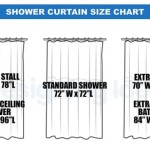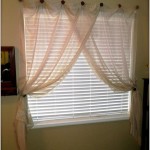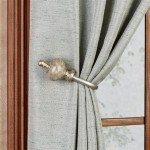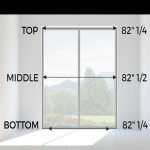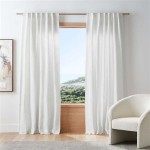Do Blinds and Curtains Go Together?: Achieving Layered Window Treatments
The question of whether blinds and curtains can be combined is a common one in interior design. The answer is a resounding yes, and layering these window treatments can offer a multitude of benefits, both practical and aesthetic. Combining blinds and curtains allows for greater control over light filtration, privacy, and insulation, while also adding depth and visual interest to a room. The key lies in understanding the different functions of each element and selecting complementary styles, colors, and textures to create a cohesive and functional window design.
Blinds, typically constructed from materials like wood, faux wood, aluminum, or vinyl, offer a structured and functional approach to window covering. They are primarily used for controlling the amount of light entering a room and providing privacy. Curtains, on the other hand, are generally made from fabric and bring a softer, more decorative element to the space. They can filter light, block it entirely (in the case of blackout curtains), and add insulation against heat and cold. By combining these two distinct elements, a homeowner can create a window treatment solution that is both practical and visually appealing.
Increased Light Control and Privacy
One of the primary advantages of layering blinds and curtains is the enhanced control over light and privacy. Blinds offer adjustable slats that can be tilted to filter light while maintaining a degree of privacy. During the day, the slats can be open to allow natural light to fill the room while still preventing direct views from the outside. In contrast, curtains can be drawn closed for complete privacy or left open to allow maximum light to enter. The combination of these treatments offers the flexibility to adjust light and privacy levels throughout the day to suit various needs and preferences.
For example, during the harsh midday sun, blinds can be closed to deflect direct sunlight, preventing glare and reducing heat buildup. At the same time, sheer curtains can be left drawn to soften the light and add a touch of elegance to the room. In the evening, both blinds and curtains can be closed for complete privacy and darkness, creating a comfortable and relaxing atmosphere. This layered approach provides a greater degree of control than either blinds or curtains alone can offer.
Furthermore, the combination can be particularly useful in rooms that face the street or have close proximity to neighboring buildings. Blinds can provide a base layer of privacy during the day, while curtains can be added for extra screening at night. This ensures that occupants feel secure and comfortable, regardless of the time of day or the level of external activity.
Enhanced Insulation and Energy Efficiency
Window treatments play a significant role in regulating the temperature of a room and improving energy efficiency. Blinds, particularly those made from insulating materials like wood or faux wood, can help to block heat transfer during the summer and retain heat during the winter. Curtains, especially those that are lined or made from heavier fabrics, provide an additional layer of insulation, further reducing energy costs.
During the summer months, closing both the blinds and curtains can help to keep the sun's heat out, preventing the room from overheating and reducing the need for air conditioning. In the winter, closing these window treatments at night can help to trap heat inside, reducing the strain on the heating system. The combined insulating properties of blinds and curtains can lead to significant energy savings over time.
Specifically, cellular or honeycomb blinds are known for their excellent insulating properties. These blinds feature a unique cellular design that traps air, creating a barrier against heat transfer. When paired with insulated curtains, the combined effect can be substantial. The selection of appropriate fabrics for curtains also contributes to energy efficiency. Thick, tightly woven fabrics like velvet or thermal-lined curtains provide the best insulation.
Aesthetic Appeal and Design Flexibility
Beyond their practical benefits, combining blinds and curtains offers numerous aesthetic advantages. Layering window treatments adds depth, texture, and visual interest to a room. It allows for a more personalized and sophisticated design that reflects individual style and preferences.
The key to achieving a successful layered look is to choose complementary colors, patterns, and textures. For example, solid-colored blinds can be paired with patterned curtains to create a focal point in the room. Alternatively, patterned blinds can be combined with solid-colored curtains for a more subtle and balanced effect. The choice depends on the overall design scheme and the desired level of visual impact.
The type of blinds and curtains selected should also complement the architectural style of the room. For instance, wooden blinds and linen curtains might be a good choice for a room with a rustic or farmhouse aesthetic, while metal blinds and velvet curtains could be more appropriate for a modern or contemporary space. The hardware used to hang the curtains, such as the rod and rings, should also be chosen carefully to complement the overall design.
Furthermore, consider the length and fullness of the curtains. Curtains that puddle slightly on the floor can add a touch of luxury and elegance, while curtains that are hung just to the floor create a more tailored and streamlined look. The fullness of the curtains, which refers to the amount of fabric used, also affects the overall appearance. Fuller curtains tend to look more opulent and dramatic, while less full curtains are more understated.
Ultimately, the decision of whether or not to combine blinds and curtains is a matter of personal preference and design goals. However, the benefits of layering these window treatments are undeniable. By carefully selecting complementary styles, colors, and textures, and by understanding the practical advantages of increased light control, privacy, and insulation, it is possible to create a window design that is both functional and aesthetically pleasing.
The installation process is also an important consideration. Blinds are typically mounted inside the window frame, while curtains are hung outside the frame. It is essential to measure the window accurately and follow the manufacturer's instructions carefully to ensure that the blinds and curtains fit properly. The height and placement of the curtain rod can also affect the overall look of the layered window treatment. Hanging the rod higher than the window frame can create the illusion of height and make the room feel larger.
Regular maintenance is also necessary to keep blinds and curtains looking their best. Blinds should be dusted or wiped down regularly to remove dirt and grime. Curtains should be washed or dry-cleaned according to the manufacturer's instructions. Taking care of window treatments will help to prolong their lifespan and maintain their aesthetic appeal for years to come.
In conclusion, the combination of blinds and curtains presents a versatile and advantageous approach to window treatment. The increased control over light, privacy, and insulation, coupled with the enhanced aesthetic appeal and design flexibility, makes it a worthwhile consideration for any homeowner looking to elevate their interior space.

Do S And Don Ts When Pairing Curtains Blinds

Do Curtains And Blinds Go Together Get Full Guide 2025

How To Match Curtains With Blinds Shades

Can You Put Blinds And Curtains Together Fraser James

Do Curtains And Blinds Go Together 2024 Worthy Guide

How To Match Your Curtains And Blinds Hillarys

Do Curtains And Blinds Go Together Get Full Guide 2025

How To Pair Curtains And Blinds

Do S And Don Ts When Pairing Curtains Blinds

How To Layer Window Treatments The Blinds Com Blog
See Also

